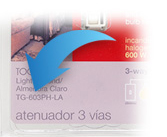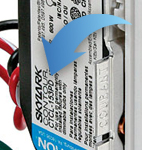
Explore Knowledge Articles
Lutron Connect Portal - Alerts
When enabled, users with access to the Place get notified of device issues in their systems via daily emails. The email contains any new issues encountered in the last 24 hours. To receive these alerts, users must register via Alert Settings.
Additionally, users can view current and historical alert data in the portal.
Select Alert Settings at the top right of the page, then enter the email of who you'd like to receive the Alerts to register a new user
Please see the Lutron Connect Portal Overview for more information on the Connect Portal.
Supported Alerts and Devices
Main Alerts
Processor Disconnected from Internet
Device No Longer Available in the System (QS Devices Only)
- RF sensor devices are reported missing for occupancy and daylight (not Pico) if the processor or the QSM doesn’t hear a heartbeat within a specific timeframe.
The timeout periods are different for a CCA link on the processor and QSM. See below for timeouts:
- RF Daylight Sensors
- CCA Proccesor Link - 4 hours
- QSM - 5 hours
- RF Occupancy Sensors
- CCA Proccesor Link - 5 hours
- QSM - 2.5 hours
Sensor Low Battery (for sensors on processor CCA link as well as sensors on QSM)
- QSM alerts are in 24.1
Shade Low Battery
Pico Low Battery (for sensors on processor CCA link as well as sensors on QSM)
- QSM alerts are in 24.1
Load Controller Errors (ESNs, PACX, and AWN)
Note: Error messages below typically match a blink code occurring on the unit
MissingInAction
LampFailure
BackendFailure
InEmergencyMode
UnAddressed
ShortedComponent
AirGapFailure
OverCurrentError
OverVoltageError
OverLoadError
UnitWarm
UnitHot
UnitOverheatedOutputsOff
MultipleError
Known Limitations
- ClearConnect Type-X (CCX) devices are not supported
- Wired sensors connected to a QSM, ESN, and older drivers are not supported
- Older 2-button RF sensors do not report a heartbeat signal. As a result, we cannot reliably report alerts on such devices.
Troubleshooting
Sensors are repeatedly alerting as "device unavailable" and then self-correcting.
Are the sensors connected to QSM? (use Lutron Designer software to find out)
If yes, is your processor firmware version 24.1 or above? If not, then upgrade your processor firmware.
If the sensors are not on QSM then are these the older 2-button sensors?
If yes, then replace the sensors with the newer 3-button ones that have a heartbeat signal.
I just set up my system, added a device, or deleted a device. To test the alerts, I disconnected the device but I did not receive an alert.
Note: It takes anywhere from 6 - 24 hours for new device data to sync to the cloud. As a result, alters only appear for new device(s) after that period.
If you must test alerts immediately, edit a Scene from the Mobile App of the area where the device is located and perform a Remote Transfer to that system to force start the sync process. You can then perform alert testing without waiting 6-24 hours.


